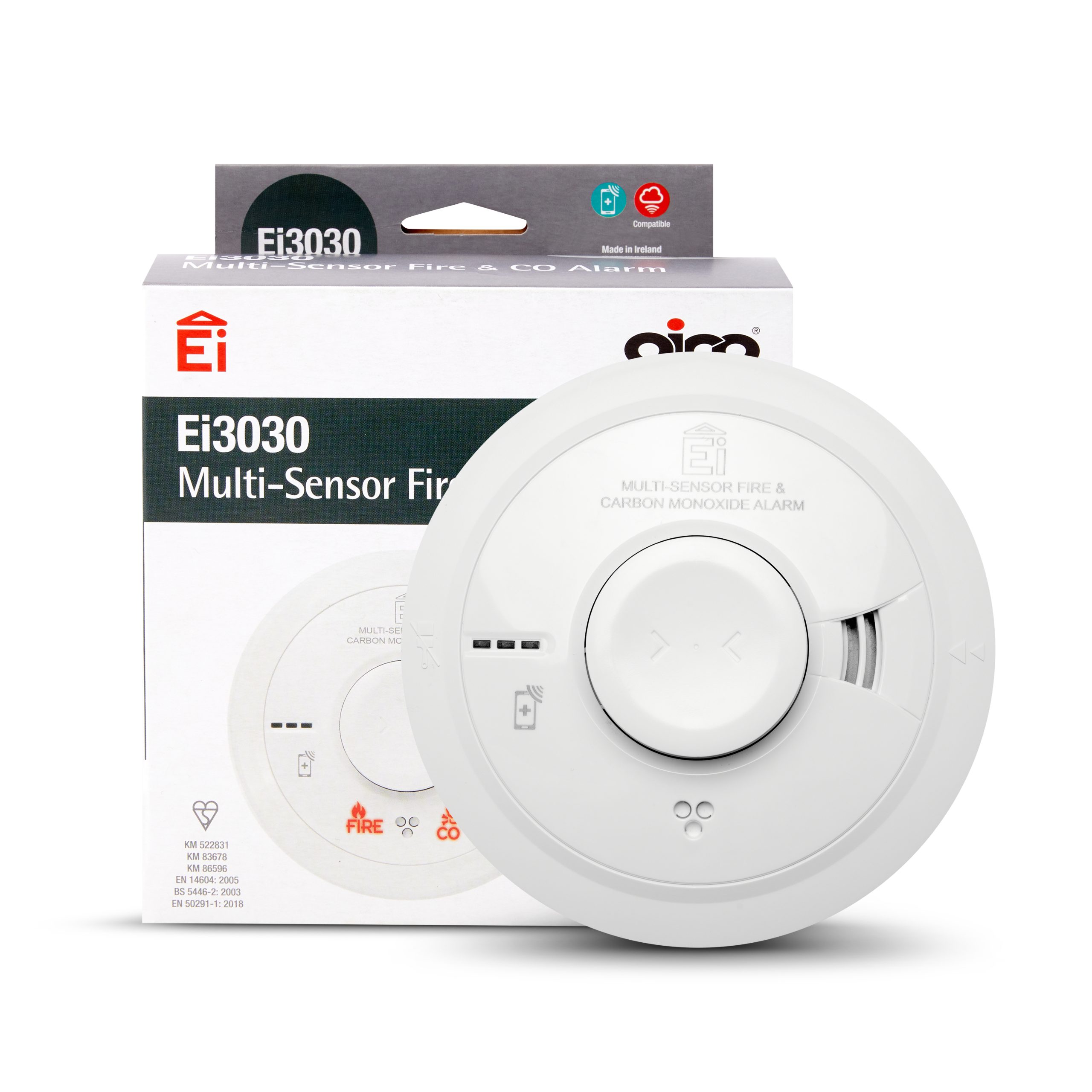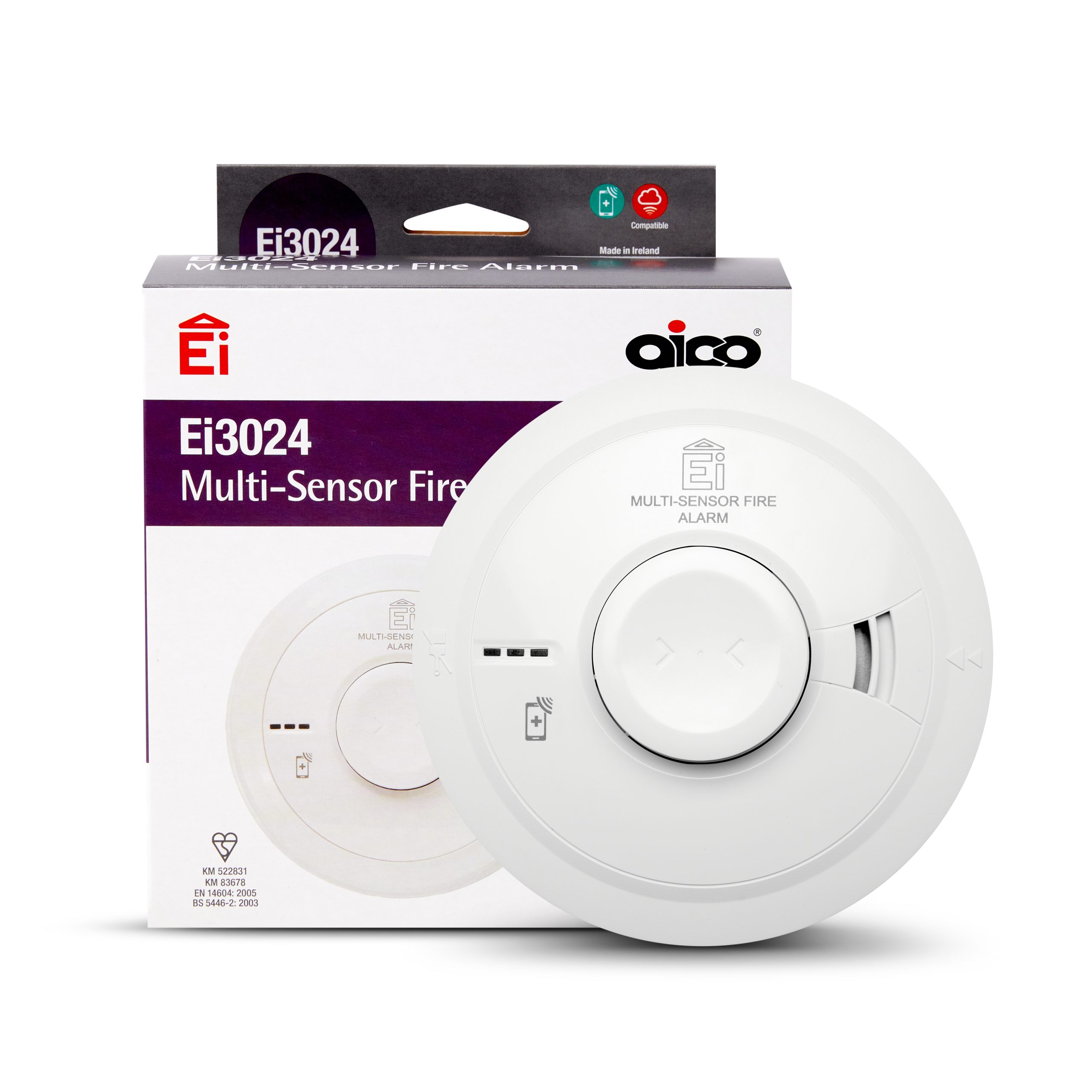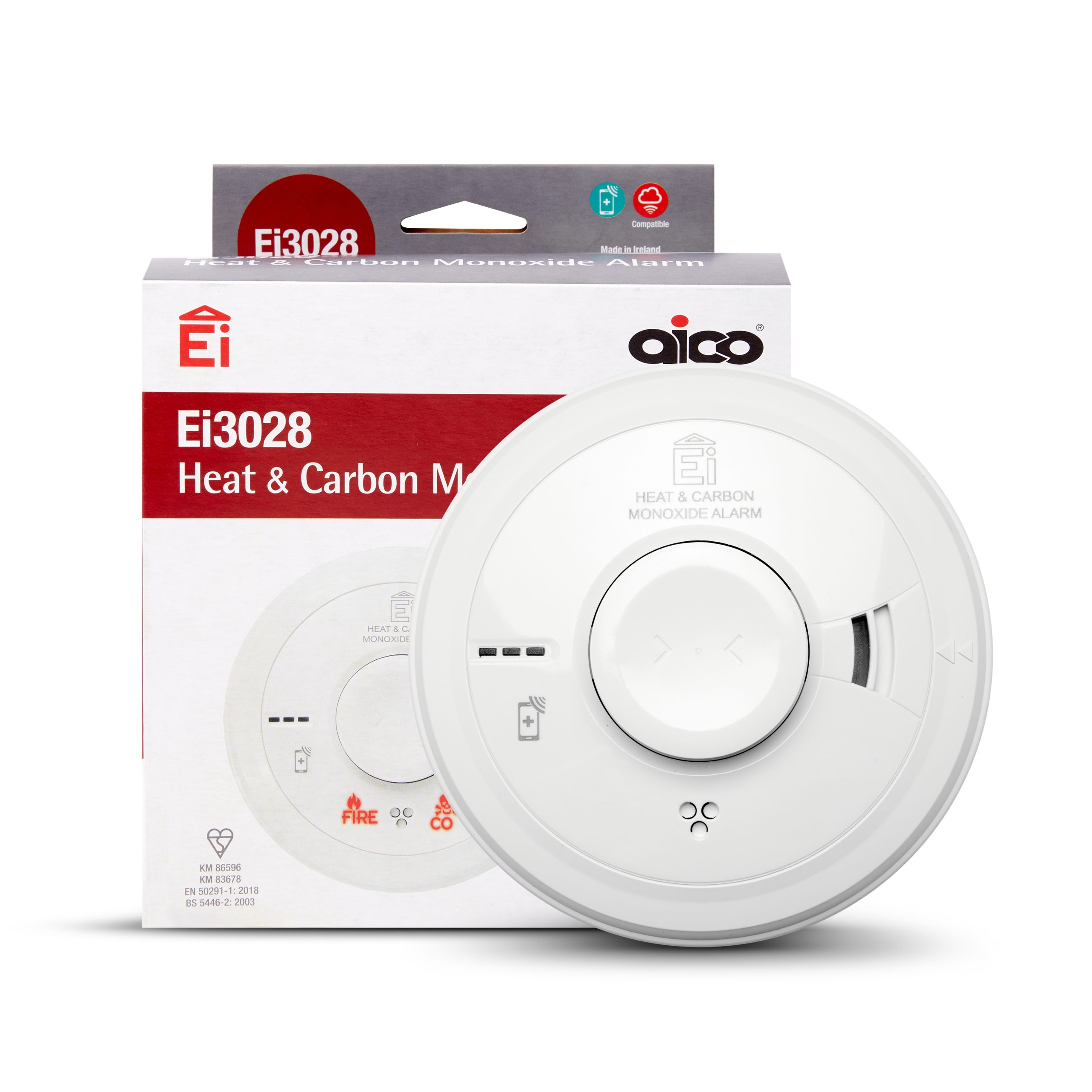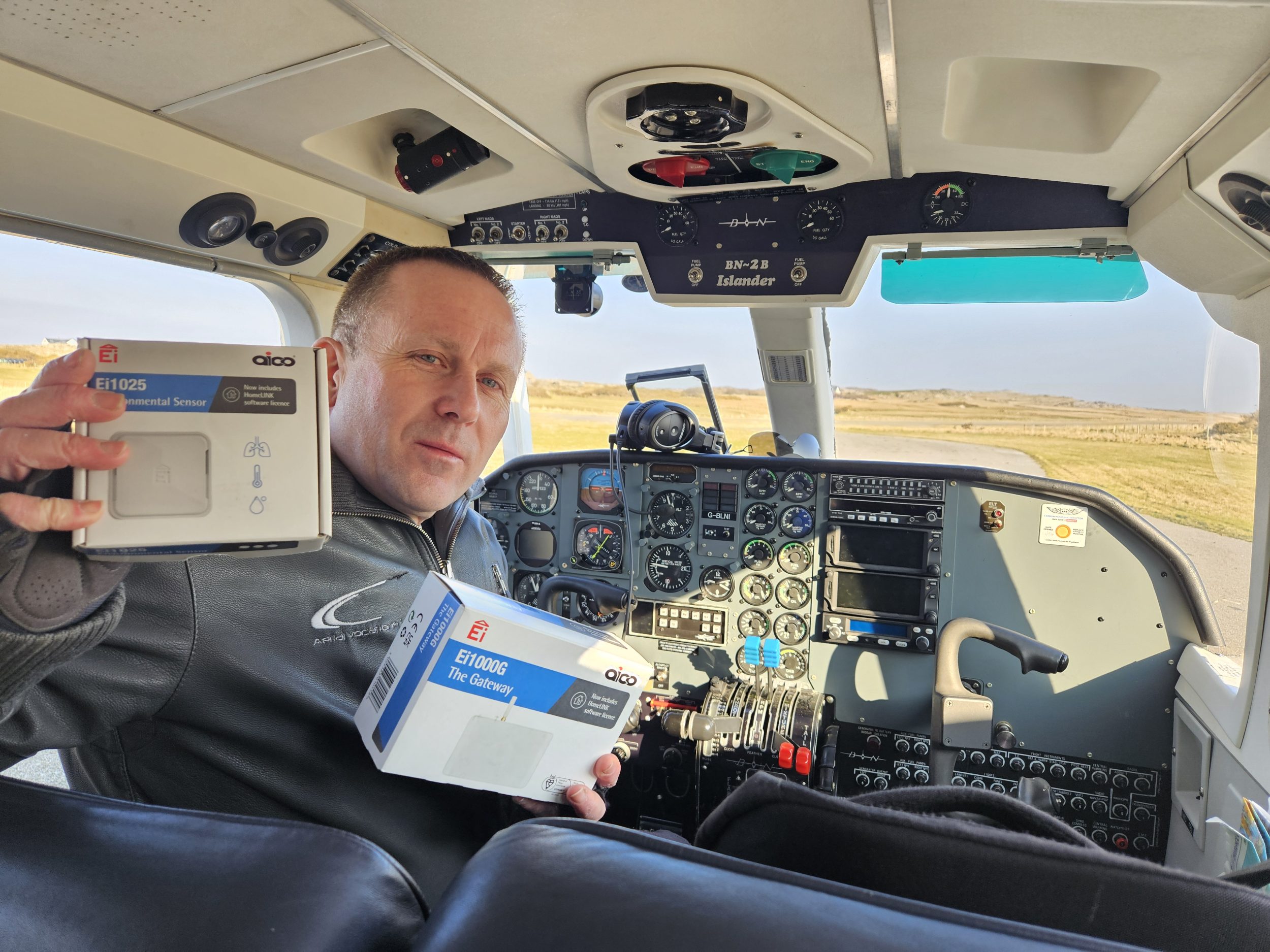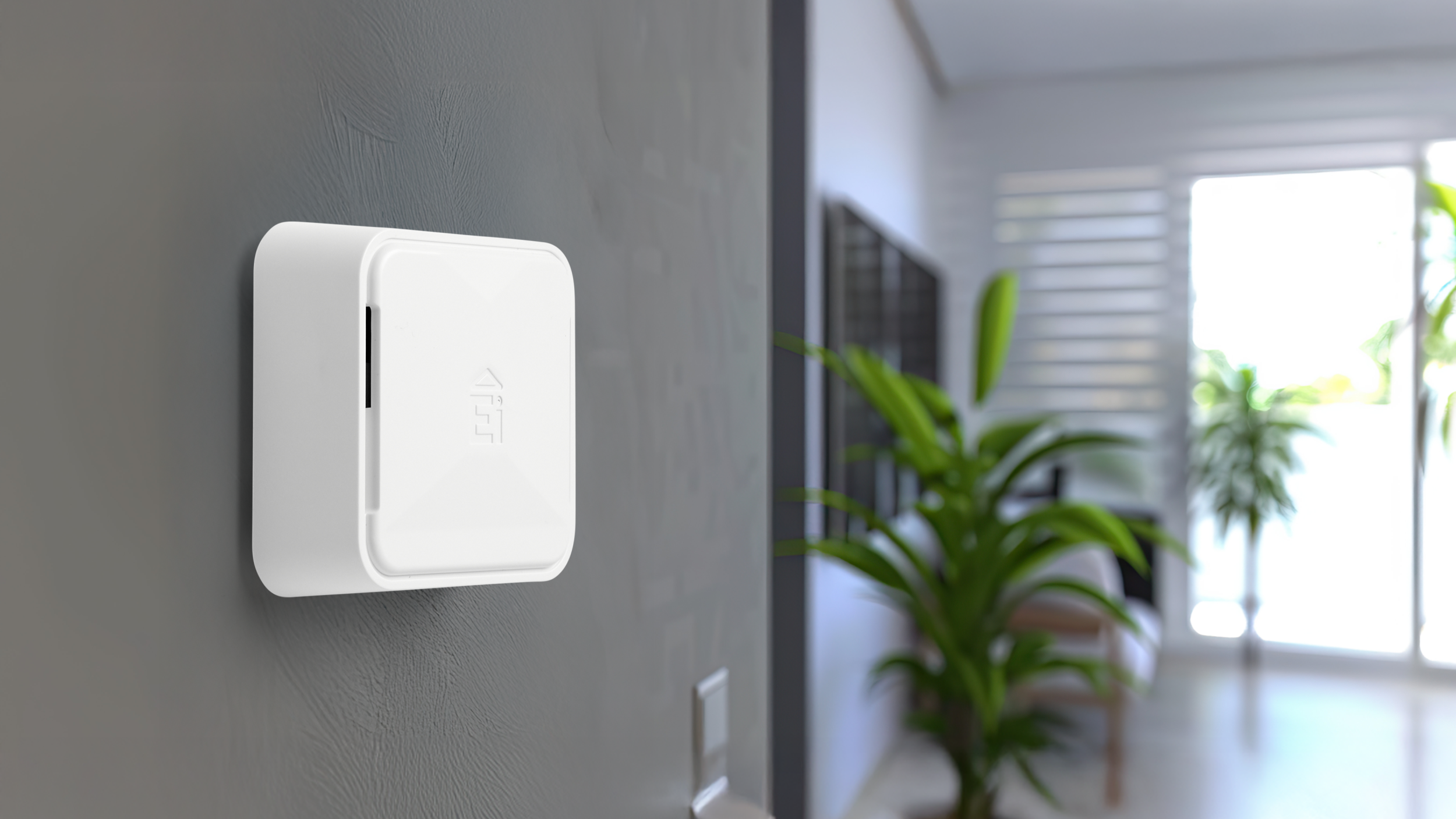IoT devices social housing providers should invest in to protect their residents & housing stock

Why Should Social Housing Providers Invest in IoT Devices?
With the HomeLINK Connected Home Platform, which includes a network of alarms and sensors, social housing providers have access to a scalable and future-proof approach to their Internet of Things (IoT) strategy. The platform helps to flag risk of damp and mould, identify poorly performing homes for targeted retrofit and produce in-depth reports for indoor environmental analysis. Implementing these smart devices can help protect the most vulnerable of residents and improve the quality of housing stock for social housing providers.
IoT Devices & Social Housing
The Internet of Things (IoT) is a network of connected devices that uses innovative technology to allow communication between the devices and an online cloud portal. Connected home technologies are transforming the way we understand our indoor environment and review the health of our homes. Products like Aico’s HomeLINK Connected Home Solution allow landlords to gather data remotely from residents’ homes, allowing a proactive approach to asset management.
Designed with social landlords, the innovative portal and connected devices provide the information landlords value most, to optimise investment, identify and tackle fuel poverty, improve maintenance and deliver unrivalled service to residents.
The 3000 series
The 3000 series provides whole property coverage from one product range, offering a range of single and multi-sensor fire and carbon monoxide (CO) alarms. When combined with the Ei3000MRF module, capabilities are enabled for wireless interconnection, data extraction and whole system monitoring via the Ei1000G Gateway.
Ei1020 and Ei1025 Environmental Sensors
The Ei1020 and Ei1025 environmental sensors can be placed throughout the home to monitor temperature, humidity and carbon dioxide (CO2). Analysis of this data provides actionable insights for both landlords and residents regarding condensation, damp, mould, indoor air quality and excess temperatures through the HomeLINK Portal and HomeLINK App for Residents.
EI1000G SmartLINK Gateway
The Gateway and cloud portal use IoT and advanced machine learning algorithms to extract and interpret data from all connected alarms and environmental sensors in a property accessible remotely via the online HomeLINK Portal.
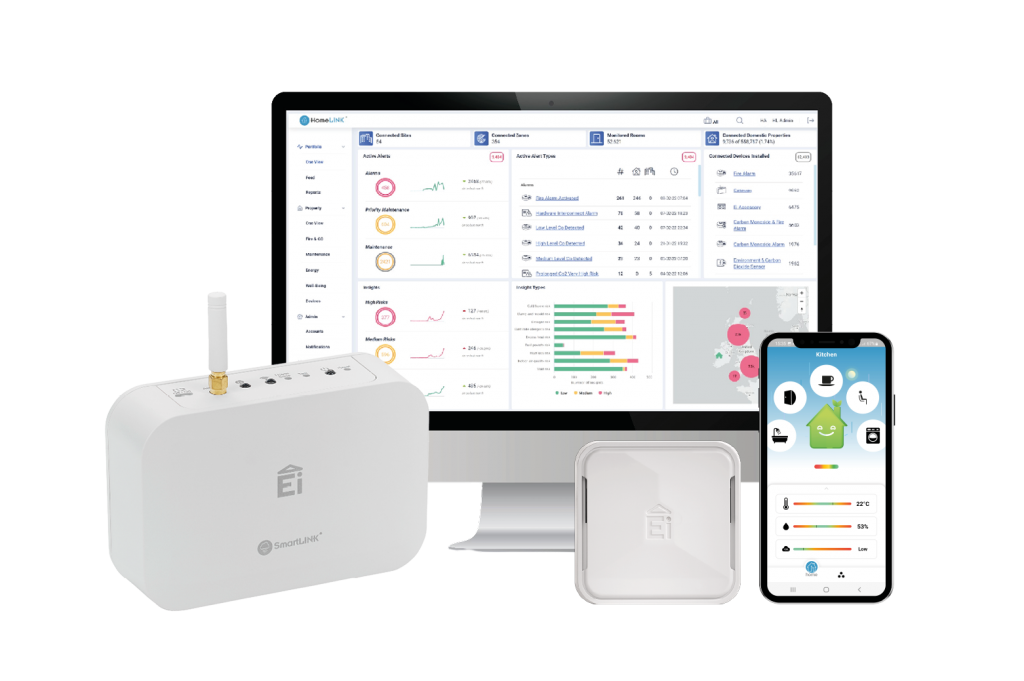
Create Healthier and Safer Homes For The Future
IoT and connected home technology can help landlords bring a new level of efficiency in the management and monitoring of the health of their housing stock while improving resident safety.
Solve Environmental Challenges
By installing environmental sensors in high-risk areas such as bathrooms, kitchens, bedrooms and living rooms, housing providers can measure temperature and indoor air quality (CO2). They also provide calculated insights into allergens and mould risk. These insights can be used by landlords to tackle issues such as disrepair and poor indoor air quality and enable preventative strategies within their housing stock.
Empower Residents with Their Own Data
With the HomeLINK App for Residents, landlords can empower their residents to be proactive in their homes by giving them access to data and personalised insights. Residents are provided with handy advice on the measures they can take to improve the health of their homes and reminders on when to test their alarms. Equipping residents with the knowledge and advice they need can help in minimising issues such as fire risk, disrepair and fuel poverty; landlords will see improvements in the maintenance of their housing stock with less intervention. This can improve the relationship between landlords and their tenants. If these risks are identified at an early stage, the resident can take action before these problems escalate.
Identify risks before they become problems
The HomeLINK portal allows landlords to remotely manage and review insights directly from their housing portfolio. Using this data, housing providers can understand where potential problems may occur and target the homes that need immediate attention, allocating resources where they are needed most to ensure residents’ homes remain healthy. Being proactive in your approach to asset management can reduce the time and cost associated with being reactive when problems occur.
Increased Efficiency and Improved Asset Management
Property notifications for connected alarms
Alarm notifications through the Gateway can be used to identify trends and highlight potential problems within housing stock. The connected alarms and their performance are tracked in real-time meaning you will be notified via email or text message when issues occur, including when alarms are removed from baseplates, when they are due to be replaced or if they have been triggered.
Remote management
Gaining access to every property to carry out essential checks can be a problem for most social housing providers. Language barriers can exacerbate this, with residents unsure why housing providers need access to their homes. Remote management of a housing portfolio enables landlords to track the performance of their connected alarm system and indoor environmental conditions without performing in-person checks and tracking them on a spreadsheet. Instead, all the information is stored in one central location, providing landlords with the full picture. This provides reassurance that your residents are protected and that your housing stock is fully compliant.
Reduction of call-out costs
Having access to these in-depth reporting tools enables landlords to forecast alarm replacement and maintenance across their entire housing portfolio helping to streamline maintenance, therefore, reducing call-out costs, and reallocating resources where they are most needed.
Preventative maintenance
Social housing providers can see a return on investment in IoT technology by implementing preventative maintenance and proactive measures. By analysing the data to understand the health and safety of their housing stock they can identify properties most at risk of disrepair and step in when early warning signs are detected.
A recent case study with Barnet Homes reviews the outcomes of using IoT technology for compliance and return on investment. For further information, you can download a copy from the guides and publications section of our website.
Remain Compliant, Tackle Fuel Poverty, & Achieve Net Zero Targets
Remain Compliant
Housing Providers must remain compliant with continuously tightening standards and legislation. With the use of HomeLINK, you can help maintain compliance more effectively. Having access to data for your entire housing portfolio in one central location makes it easy to review important information like replacement dates. The average alarm spends 6-8 years installed in a property when the recommendation from most manufacturers is 10 years. Many social landlords take a cautious approach, replacing alarms early, but with easy access to replacement dates replacements can be delayed, reducing costs and environmental impact while remaining compliant.
PAS 2035
The UK’s housing sector is under pressure to retrofit its housing stock. This means identifying the homes that require additional energy efficiency measures and improving their overall performance. Pre-retrofit the HomeLINK portal allows landlords to identify which homes are in most need of improvement through monitoring their thermal performance.
As part of PAS 2035, landlords are required to monitor environmental conditions before and after the retrofit to ensure the improvements meet intended outcomes and are not inadvertently making environmental conditions worse for residents. Improvements made to retrofitted homes can cause issues like overheating or increased airtightness coupled with inadequate ventilation, meaning there is a higher risk of damp and mould.
In compliance with PAS 2035, surveys can be issued to residents via the HomeLINK App making it easier to collect important information from your tenants,
To learn about PAS 2035 and compliance you can read more here.
Homes (Fitness for Human Habitation) Act 2018
The Homes Act 2018 applies to both the private and social rented sectors. To comply, landlords must take the necessary measures to ensure homes are fit for human habitation. The legislation requires compliance with the Housing Health and Safety Rating System (HHSRS). The HHSRS is a risk-based evaluation tool that provides guidance for landlords in relation to the safety of their housing stock, outlining the hazards and disrepair to be avoided. This covers structural issues, environmental conditions, home safety and quality of life.
The number of disrepair claims from residents in the social housing sector has rapidly increased recently, meaning more pressure on housing providers to maintain the health of their homes. The data from HomeLINK can also be analysed to see where new investment is best placed by identifying the properties at higher risk of falling into disrepair.
To learn about the Home (Fitness for Human Habitation) Act 2018 and compliance you can read more here.
Achieve Net Zero Targets
Improving energy efficiency in housing stock is essential to achieve the UK’s net zero targets within the housing sector by 2050. The data from HomeLINK can also be analysed to see where new investment is best placed by identifying the properties most at risk. Optimising the selection of homes for retrofit means housing providers can work towards improving the efficiency of their housing stock while working towards net zero targets.
Tackle Fuel Poverty
Households across the UK are currently facing a cost of living crisis. With the spiralling cost of energy bills, some residents can’t afford to heat their own homes. Recognising the residents that are most at risk of fuel poverty and in need of support is the first critical step in addressing this issue. Environmental sensors measure trends in temperature data from residents’ homes. When a single room is being heated and the others remain cold, HomeLINK’s cold home insight indicates that the resident might be unable to afford to heat the whole house. Housing providers can use this information to signpost their residents to help. As well as identifying these residents, environmental sensors can also highlight the condition of housing stock and where best to invest in development.
Single View Of IoT Data & Insights
A full stock rollout of sensors provides an overview of the entire housing portfolio meaning landlords have complete oversight of the indoor environment in their homes and their fire safety. The HomeLINK Portal makes forecasting the replacement and maintenance of alarms easier, with its reporting tools helping landlords remain compliant. Having a complete overview of the indoor environment means housing providers can identify which of their properties have a higher risk of falling into disrepair.
The HomeLINK Portal also provides data across fire safety, indoor environment, and energy, providing a single location for joined-up management of landlord assets. Cost savings are enhanced by multi-stakeholder use of data. Using the Ei1000G Gateway as the central hub, all other devices connect through this. Properties with existing Gateways can have additional sensors added, providing an enhanced return on investment.
Notifications can be set up to ensure the right information gets to the right person so issues can be resolved efficiently. Any head removals or fault notifications can be sent directly to the fire safety team meaning they are able to contact the customer directly, assess the issue and if needed replace the alarm or educate the tenant about why they cannot remove the alarm improving resident engagement.
To find out more about the benefits of the HomeLINK Connected Home Solution, please visit Aico Smart Home.

